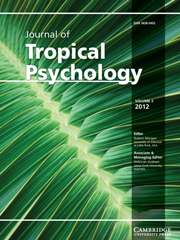Article contents
Using video clips to elicit affects in the Asian iGeneration
Published online by Cambridge University Press: 10 June 2015
Abstract
The present study aimed to develop a set of video clips to elicit positive, negative, and neutral affects in male and female Asian young adults growing up with the Internet. Based on the Internet rating and past literature, we selected 12 video clips as candidates. Results of three experiments (N = 155) showed that among these video clips, six clips, two clips for each affect, were particularly effective in eliciting target affects in both genders. This set of video clips can be used as a valid tool to induce affect in the iGeneration.
- Type
- Articles
- Information
- Copyright
- Copyright © The Author(s) 2015
References
- 1
- Cited by




